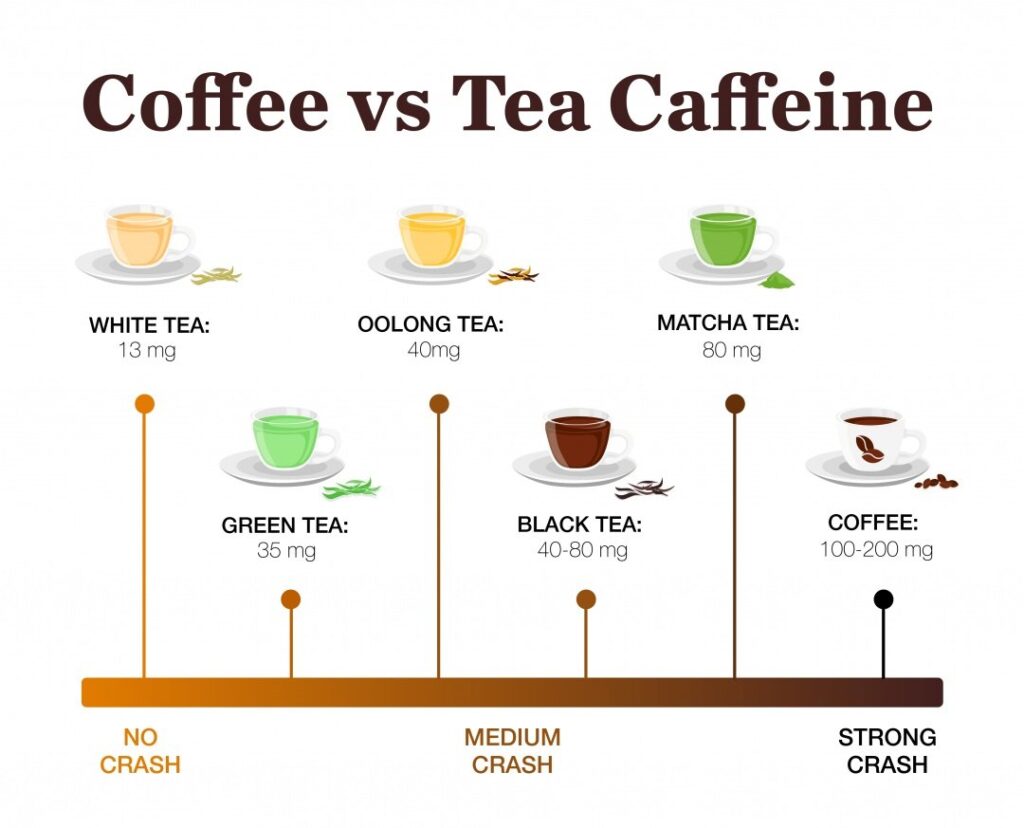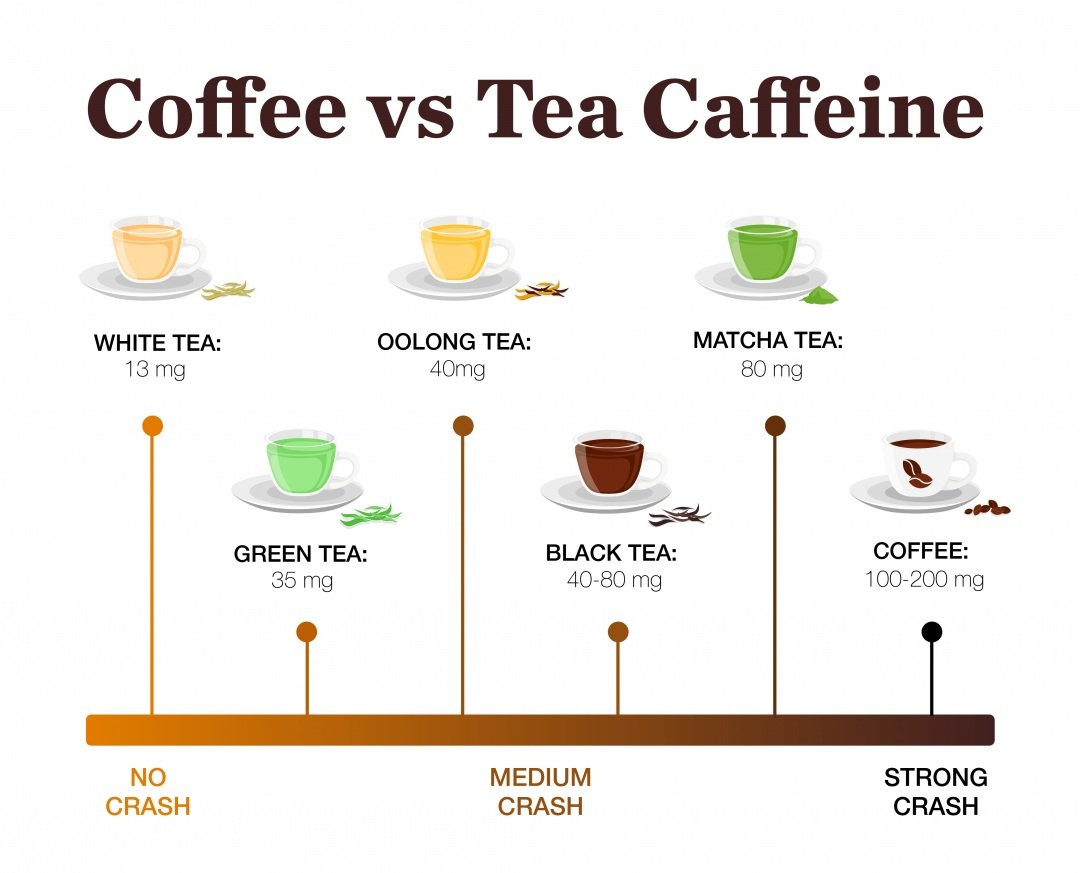
Matcha vs. Coffee: A Caffeine Showdown
In the bustling world of beverages, two titans reign supreme: coffee and matcha. Both offer a revitalizing jolt, a comforting ritual, and a global following. However, the fundamental question remains: how does the caffeine in matcha stack up against the caffeine in coffee? This article delves deep into the caffeine content of these popular drinks, exploring their origins, preparation methods, and the resulting effects on your body and mind. We’ll dissect the nuances of each beverage to provide a clear and comprehensive comparison, helping you make an informed choice about which one best suits your needs.
The Origins and Evolution of Matcha and Coffee
To understand the caffeine in matcha and coffee, it’s crucial to appreciate their distinct histories. Coffee, originating in Ethiopia, has traversed continents, evolving from a simple bean to a global commodity. Its popularity soared with the rise of the coffeehouse, becoming a staple in social and economic life. The preparation methods are diverse, encompassing everything from the traditional drip to the modern espresso, each influencing the final caffeine concentration.
Matcha, on the other hand, has its roots in East Asia, specifically Japan. This vibrant green powder is made from finely ground tea leaves, cultivated under specific conditions to enhance chlorophyll production and flavor. Matcha’s use in Zen Buddhist ceremonies highlights its cultural significance, emphasizing mindfulness and a slower, more deliberate pace. The preparation process, which involves whisking the powder with hot water, is a ritual in itself, creating a frothy, intensely flavored beverage.
Deciphering Caffeine Content: A Comparative Analysis
The caffeine in matcha and coffee varies depending on several factors, including the type of bean or tea leaf, the preparation method, and the serving size. Generally, a standard cup of brewed coffee (8 ounces) contains approximately 95 milligrams of caffeine. This can fluctuate based on the roast of the beans and the brewing duration. Darker roasts tend to have slightly less caffeine than lighter roasts, while longer brewing times extract more caffeine.
The caffeine in matcha presents a different profile. A typical serving of matcha (1-2 grams) contains around 30-70 milligrams of caffeine. This variance is influenced by factors such as the grade of matcha (ceremonial grade typically has a higher caffeine content) and the amount of powder used. However, unlike coffee, which is filtered, you consume the entire tea leaf when you drink matcha. This means you’re ingesting all the nutrients, including the caffeine, directly.
Therefore, while a cup of coffee often delivers a more immediate and potent caffeine surge, matcha provides a more moderate and sustained release. This difference is largely due to the presence of L-theanine in matcha, an amino acid that promotes relaxation and counteracts the jitters sometimes associated with caffeine consumption.
The Impact of Preparation Methods on Caffeine Levels
The way you prepare your beverage significantly influences the caffeine in matcha and coffee. For coffee, espresso machines, French presses, and pour-over methods all yield different caffeine levels. Espresso, with its concentrated extraction process, typically contains a higher caffeine content per ounce compared to drip coffee. Cold brew, known for its smooth flavor, often has a higher caffeine content as well due to the extended steeping time.
For matcha, the traditional preparation involves whisking the powder with hot water. The temperature of the water and the vigor of the whisking can affect the final caffeine in matcha concentration. Using more matcha powder will naturally increase the caffeine, while a lower water temperature can reduce the extraction. Furthermore, the quality of the matcha powder itself plays a crucial role. Higher-grade matcha, which uses younger tea leaves, typically contains a higher concentration of caffeine and nutrients.
Beyond Caffeine: Other Considerations
While the caffeine in matcha and coffee is a primary focus, other factors contribute to the overall experience. Coffee is celebrated for its rich flavor profiles, ranging from fruity and floral to bold and earthy. It also contains antioxidants that offer health benefits. However, coffee can sometimes trigger acidity and digestive issues in sensitive individuals.
Matcha, with its grassy and slightly sweet flavor, is packed with antioxidants and L-theanine. The L-theanine promotes a state of calm alertness, making matcha a popular choice for those seeking sustained energy without the anxiety that coffee can sometimes induce. Matcha also provides a wealth of vitamins, minerals, and fiber, contributing to its overall health benefits. The caffeine in matcha is often experienced with a sense of calm focus.
The Physiological and Psychological Effects
The physiological effects of caffeine in matcha and coffee are similar, but the intensity and duration may differ. Both beverages stimulate the central nervous system, increasing alertness, focus, and energy levels. However, the caffeine in matcha is often associated with a smoother, more sustained energy release, while coffee can provide a more immediate and intense jolt.
Psychologically, both drinks can improve mood and cognitive function. Coffee’s effects may be more immediate, leading to a rapid increase in alertness and productivity. Matcha, with its L-theanine content, can promote a sense of calm focus, making it a good choice for tasks requiring sustained concentration. The effects of the caffeine in matcha can be more subtle but longer-lasting.
Health Benefits and Potential Risks
Both coffee and matcha offer health benefits. Coffee consumption has been linked to a reduced risk of certain diseases, including type 2 diabetes, Parkinson’s disease, and liver disease. However, excessive coffee consumption can lead to anxiety, insomnia, and digestive issues. It’s important to monitor your caffeine intake and listen to your body.
Matcha is rich in antioxidants, which can protect against cell damage and reduce the risk of chronic diseases. Studies suggest that matcha may also improve heart health and boost metabolism. The potential risks of matcha consumption are generally low, but some individuals may experience caffeine-related side effects. The caffeine in matcha is generally considered safe in moderation.
Making the Right Choice: Coffee vs. Matcha
Choosing between coffee and matcha depends on your individual preferences and needs. If you’re looking for a quick energy boost, coffee might be your go-to choice. If you prefer a more sustained, calm energy with added health benefits, matcha could be a better option. Consider your sensitivity to caffeine, your taste preferences, and the overall experience you desire. The caffeine in matcha offers a different experience than that of coffee.
Ultimately, both coffee and matcha can be valuable additions to a healthy lifestyle. The key is moderation and awareness of your body’s response to caffeine. Experiment with different preparations and serving sizes to find what works best for you.
Conclusion: The Caffeine Conundrum Resolved
The caffeine in matcha and coffee present unique profiles, each with its own set of advantages and disadvantages. Coffee offers a potent and immediate boost, while matcha provides a more balanced and sustained energy release. Understanding the nuances of these beverages, including their origins, preparation methods, and potential effects, empowers you to make an informed choice that aligns with your personal preferences and health goals. Whether you opt for the familiar comfort of coffee or the vibrant energy of matcha, both can play a role in supporting your daily routine. The decision on which has a better balance of caffeine is up to you.
[See also: The Best Coffee Brewing Methods for Beginners, Matcha Recipes: Creative Ways to Enjoy Matcha, The Health Benefits of Green Tea]


